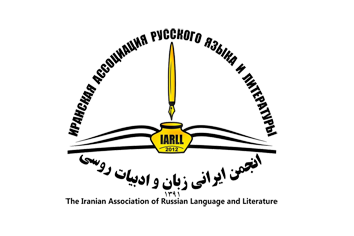SYMBOLIC SIGNIFICANCE OF THE IMAGE OF TREE IN OLD IRANIAN AND SLAVIC MYTHOLOGICAL SYSTEMS
DOI:
https://doi.org/10.61186/iarll.20.207Keywords:
Ancient Iranian Mythology, Slavic Mythology, Plant Symbolism, Tree of Life, World Tree, Cedar, OakAbstract
The article is devoted to the comparison of the images of some trees in the ancient Iranian and Slavic mythological systems. The system of representation of cedar, oak, pine, the symbolism of the world tree and the anthropomorphic qualities of plants are studied. Obviously, the perception of plants as special mythological objects in both Iranian and Slavic cultures has ancient traditions, which are based on intercultural interaction. It is the interpenetration of cultures that contributes to strengthening the connection between peoples, revealing the unique and common features of their worldview. The material of this article shows that there are intersections and coincidences in the perception of the image of a tree in the Russian folk and Iranian traditions. An interesting image of the world tree, which is considered a kind of model of the universe. It is significant to endow plants with human qualities for their inclusion in ritual and mythological rites. It is concluded that work in this direction is necessary and contributes to the strengthening of intercultural interaction.
Extended abstract:
The article is devoted to the comparison of the images of some trees in the ancient Iranian and Slavic mythological systems. The paper explores the question of the system of representation of cedar, oak, pine, the symbolism of the world tree and the anthropomorphic qualities of plants. Obviously, the perception of plants as special mythological objects in both Iranian and Slavic cultures has ancient traditions, which are based on intercultural interaction. It is the mutual influence of cultures that contributes to strengthening the connection between peoples, revealing the unique and common features of their worldview. This is the purpose of the work. The novelty of this article lies in the fact that in the perception of the image of a tree in Russian folk and Iranian traditions, there are intersections and coincidences. The hypothesis of the work is an attempt to consider the features of the symbolic image of some plants and systems of their representation in ancient Iranian mythology and Russian folk tradition. In the work, by a descriptive method, there is a tendency for a holistic perception and understanding of the role of plants in the formation of the worldview features of people and the foundations of their culture. The relevance of the article is related to the need for a comparative analysis of the symbolic representation of trees in the Iranian and Russian folk traditions. The work on comparing the symbolic images of trees in the ancient Iranian and Russian mythological pictures of the world is promising and interesting, and contributes to the understanding of the uniqueness and commonality of peoples' worldview and cultural exchange. The correlation of various states and ideas of a person with the symbolism of plants is a kind of special universal language through which one can understand the principles of the cultural code of different peoples. In the article, we come to the conclusion that the perception of plants as special mythological objects in both Iranian and Slavic cultures has ancient traditions and every nation uses the tree symbol as a cultural value. In both nations, the image of trees and plants is imprinted on stones, seals and ceramics of their time. Each plant could belong to certain religious beliefs and traditions and has its own hierarchical designation. As soon as a person eats an apple forbidden by God, he immediately descends from paradise to earth. Such and similar symbols, rituals, ceremonies connect the two peoples with intercultural interactions that cannot be passed by. It is concluded that work in this direction is necessary and contributes to the strengthening of intercultural interaction.
Downloads
Published
How to Cite
Issue
Section
License
Copyright (c) 2022 Issledovatel'skiy Zhurnal Russkogo Yazyka i Literatury

This work is licensed under a Creative Commons Attribution 4.0 International License.
![]()
"Creative Commons Attribution 4.0 International (CC-BY 4.0)"


